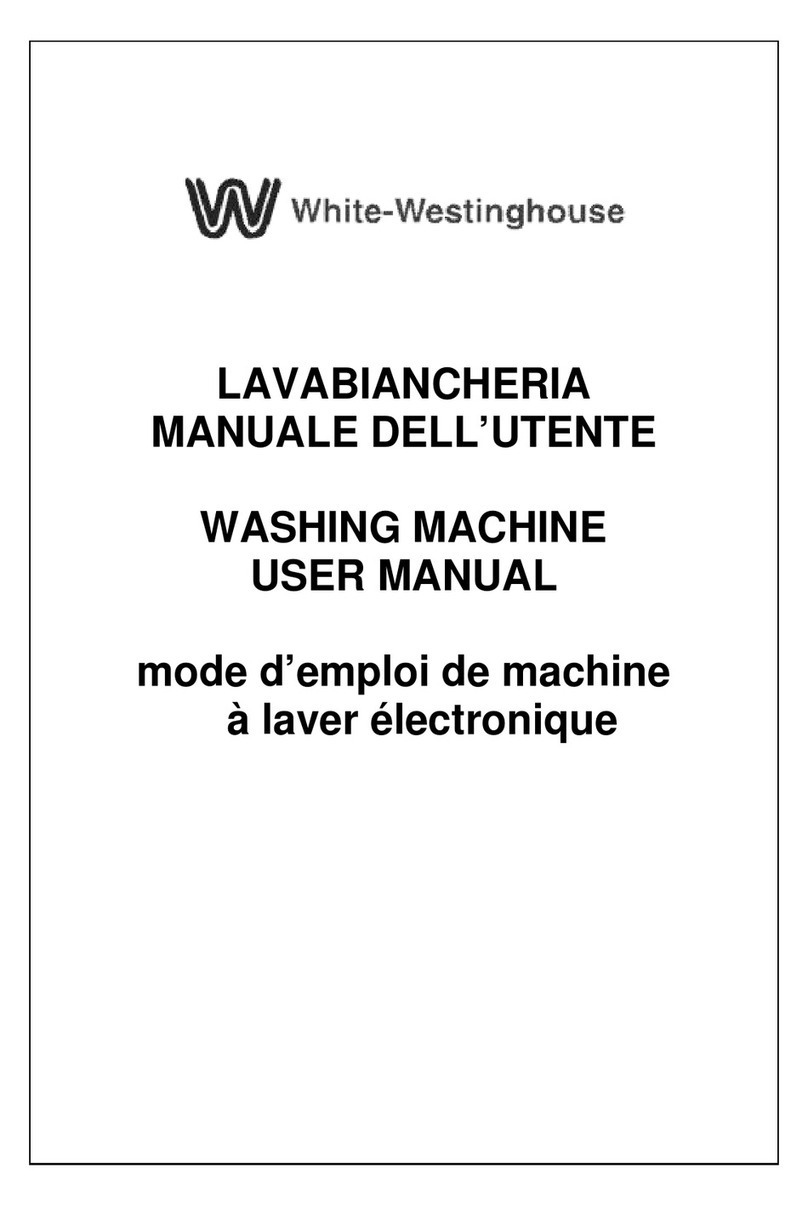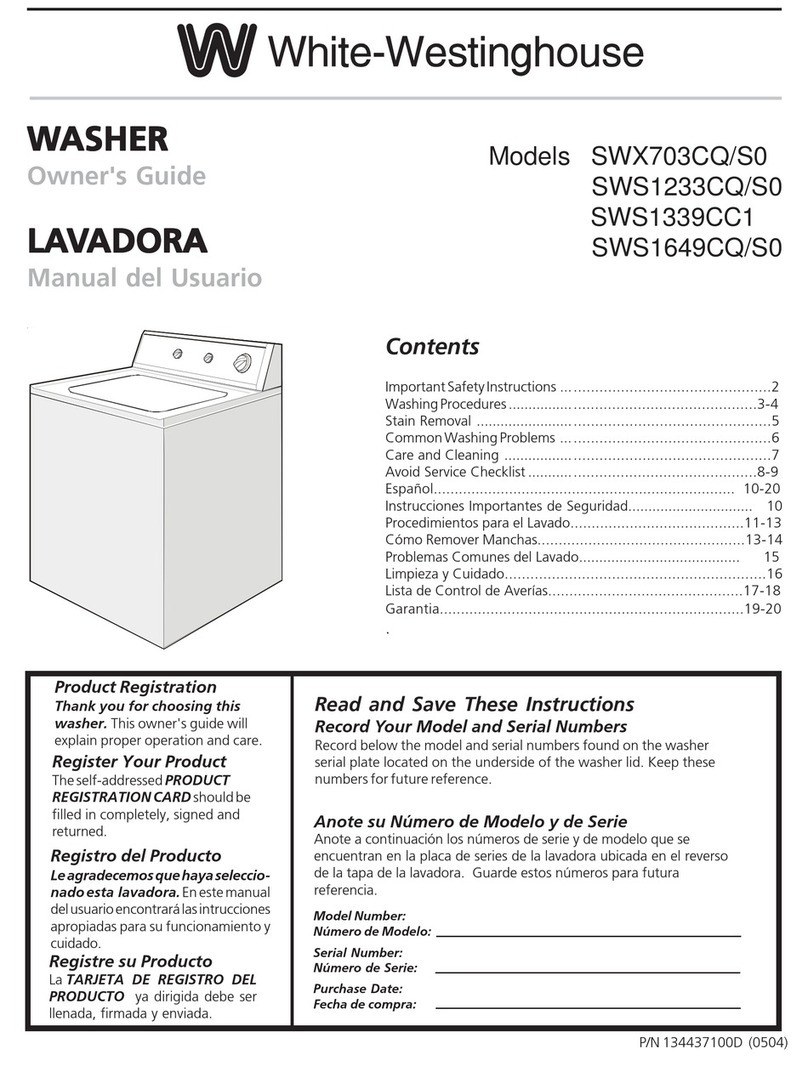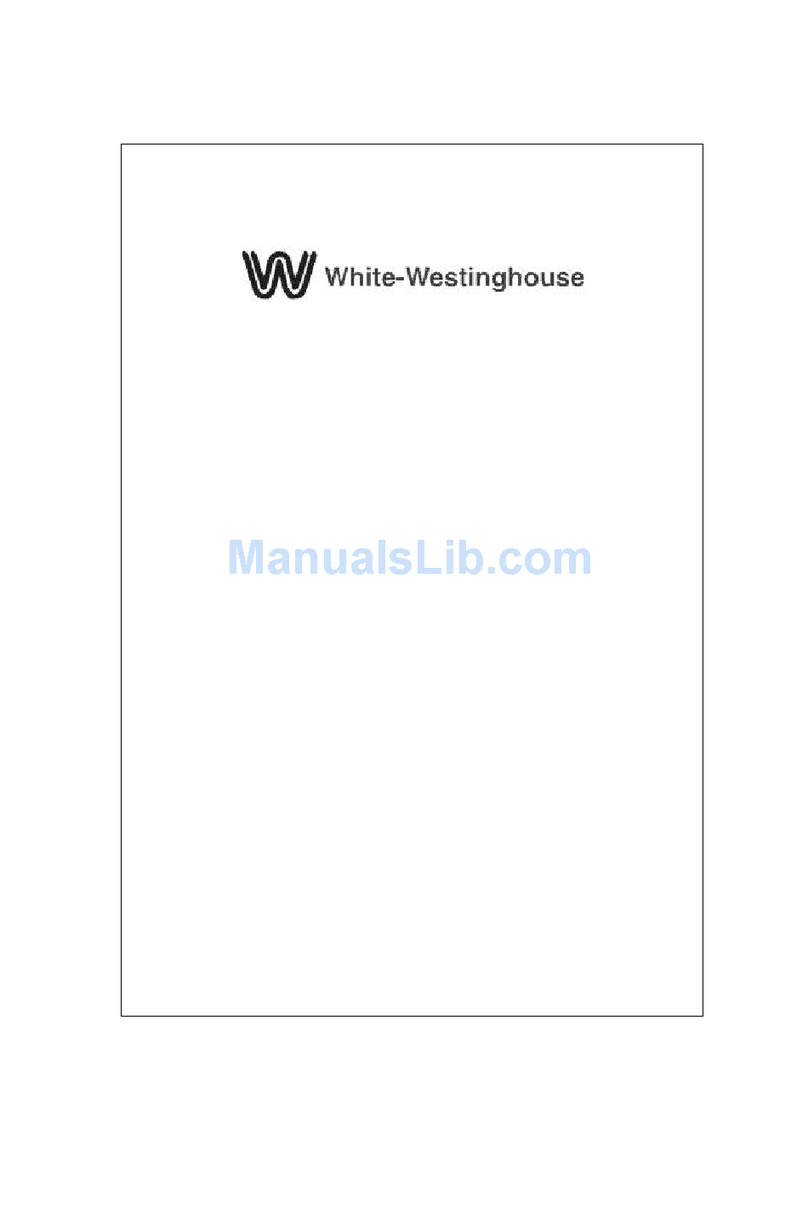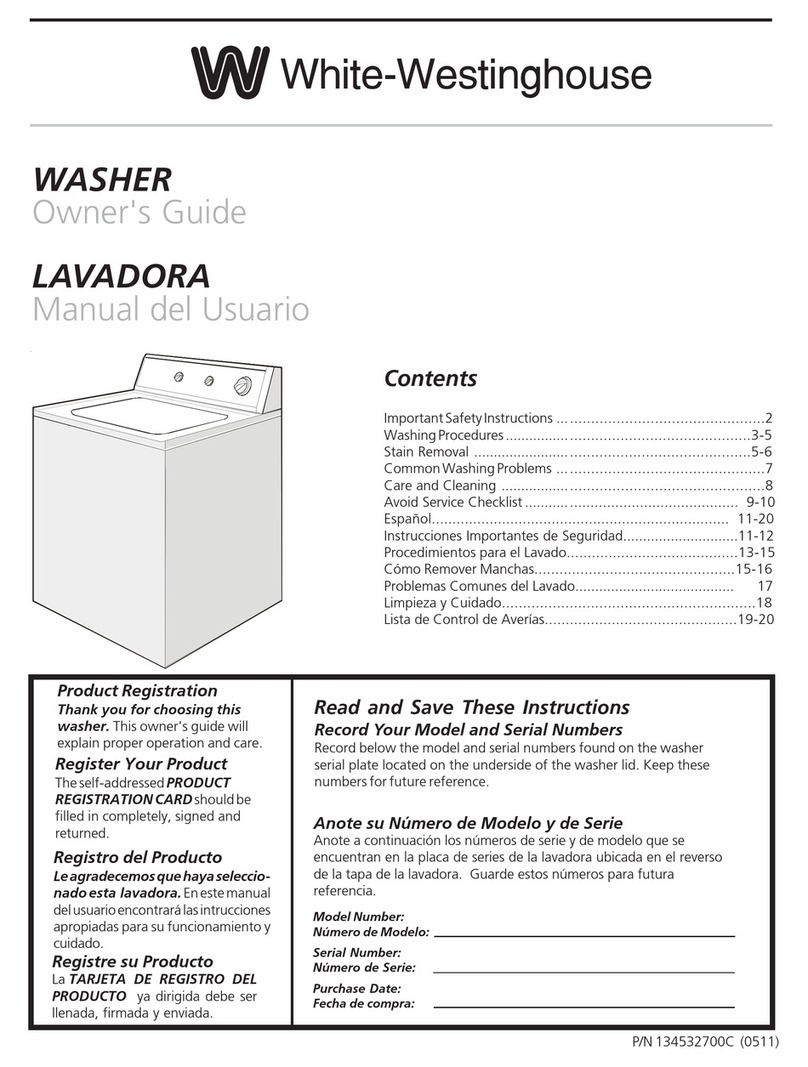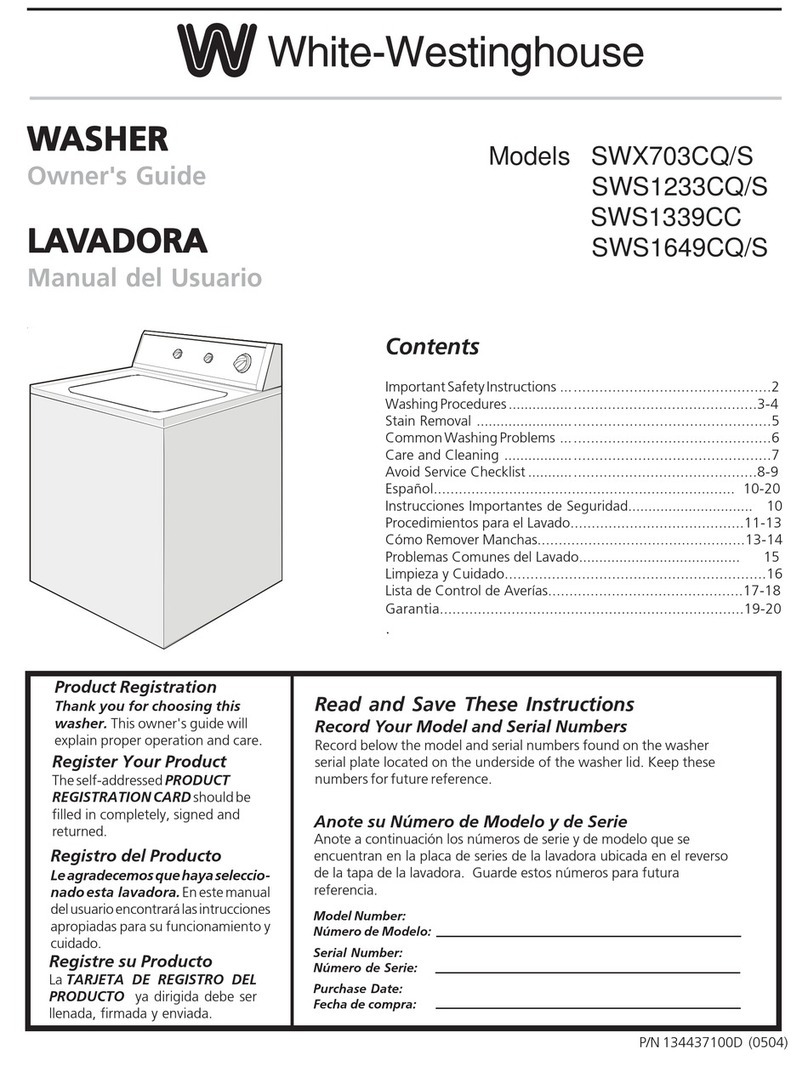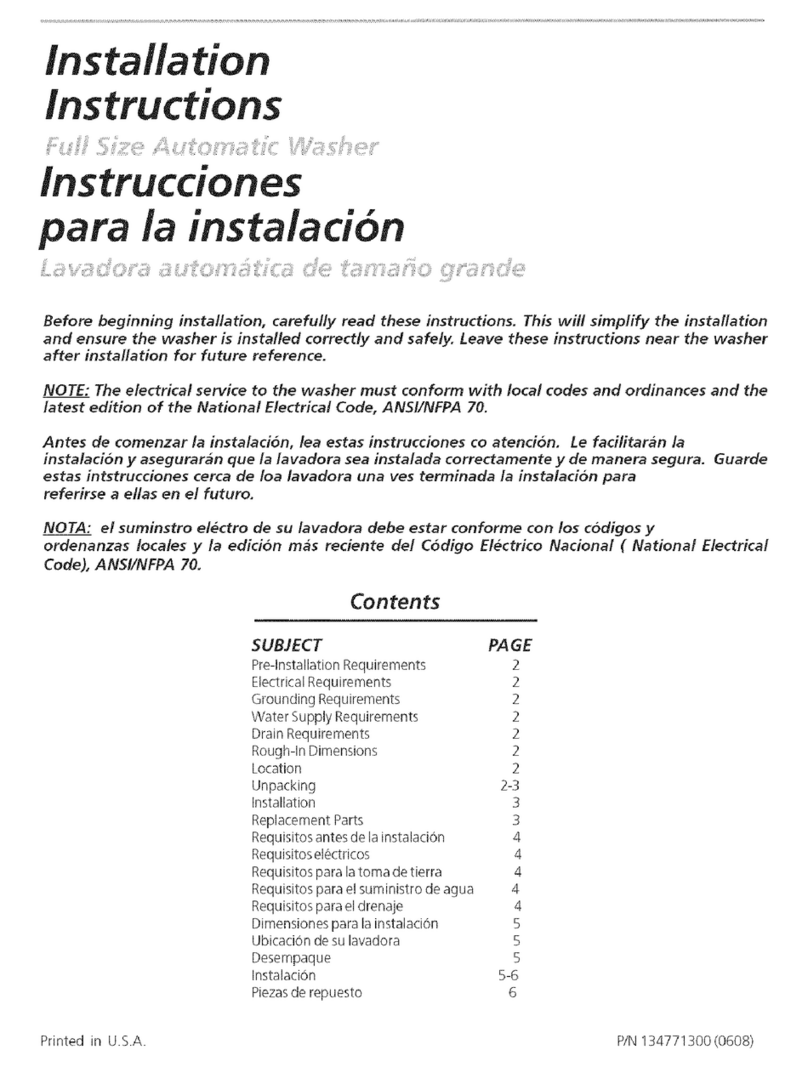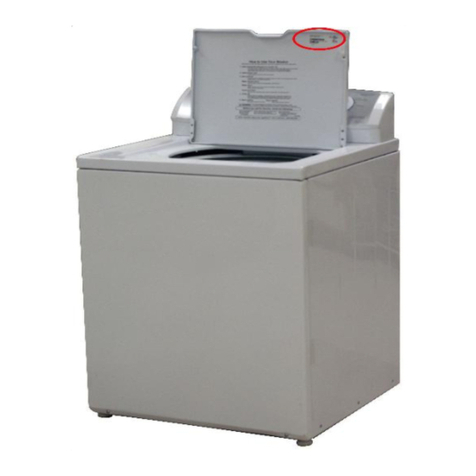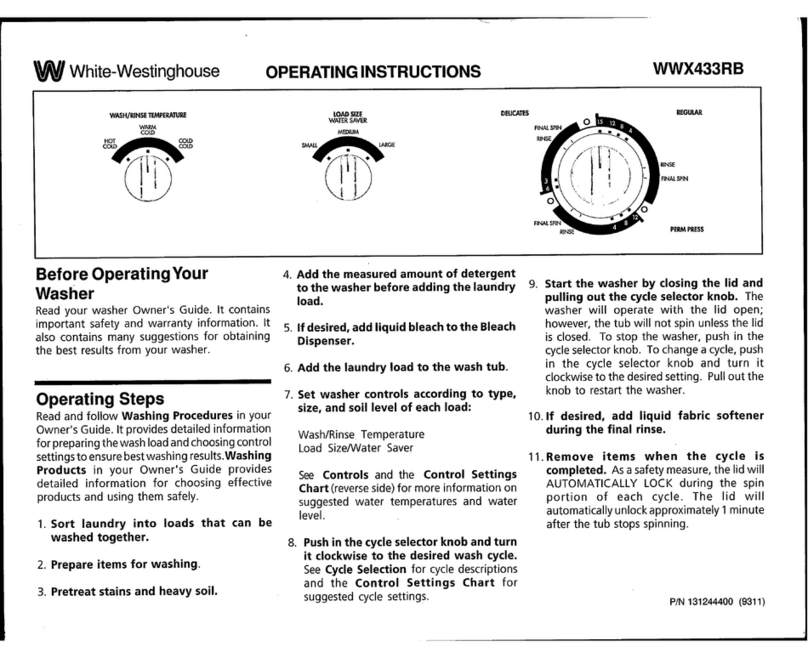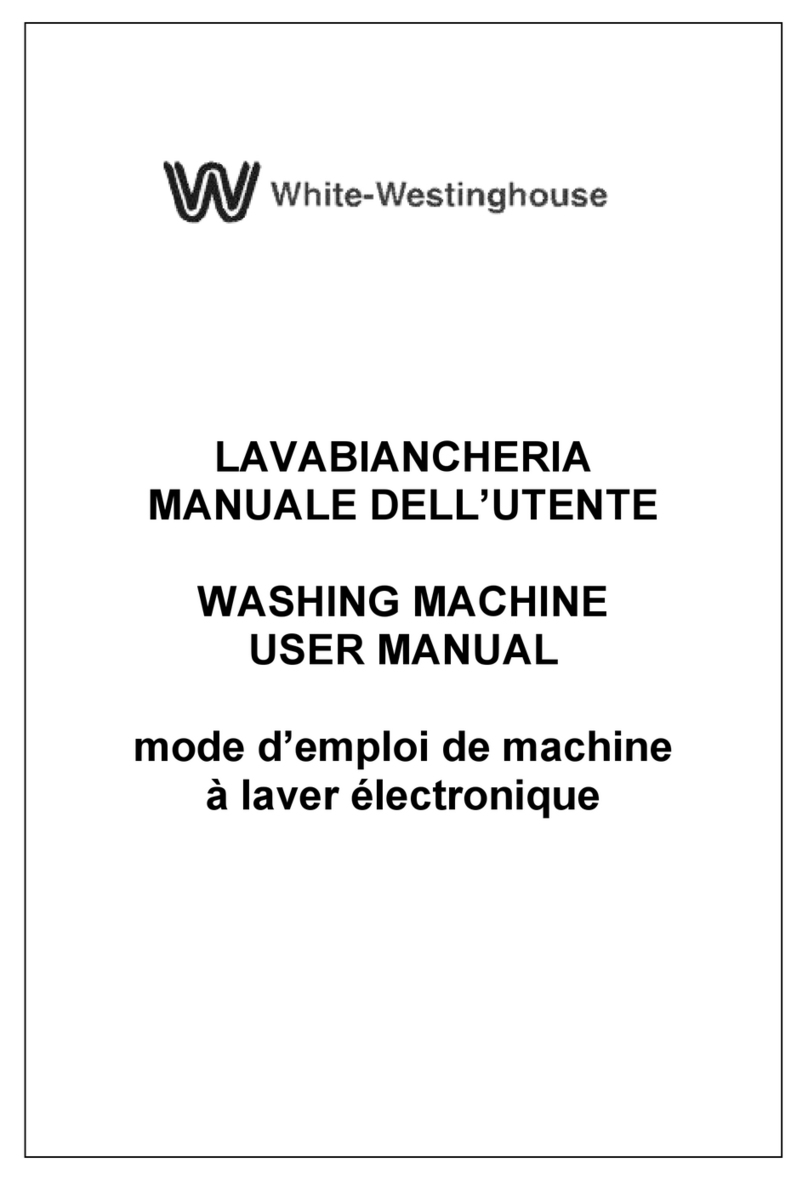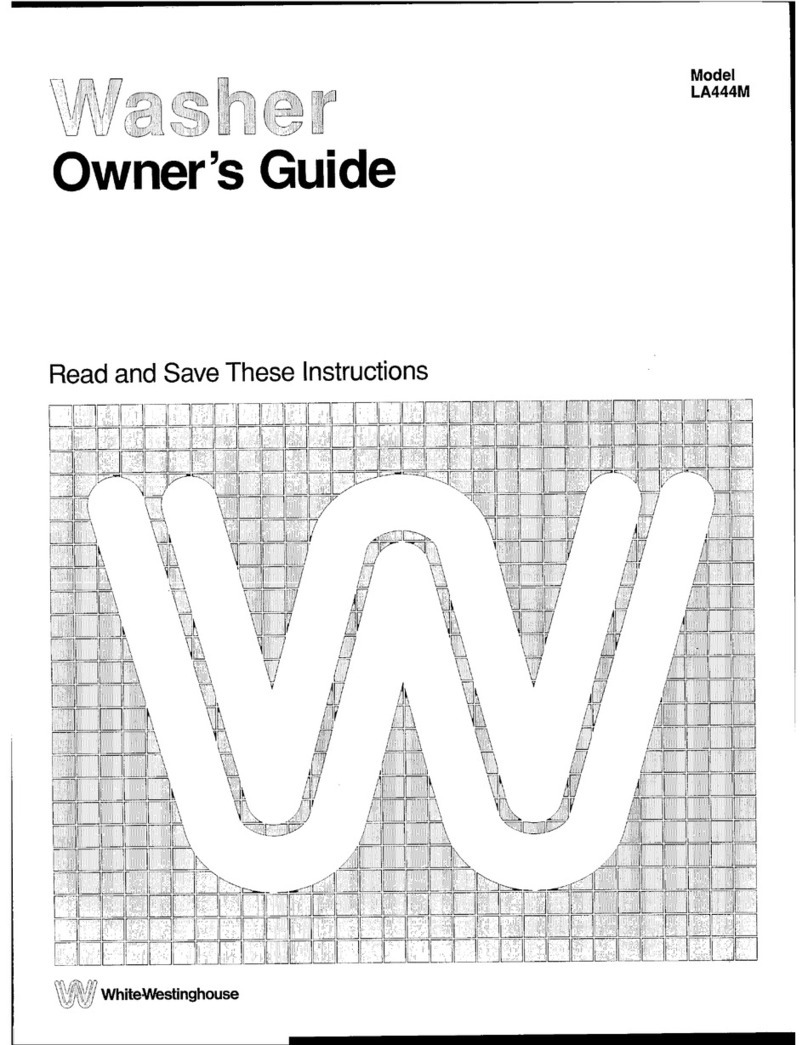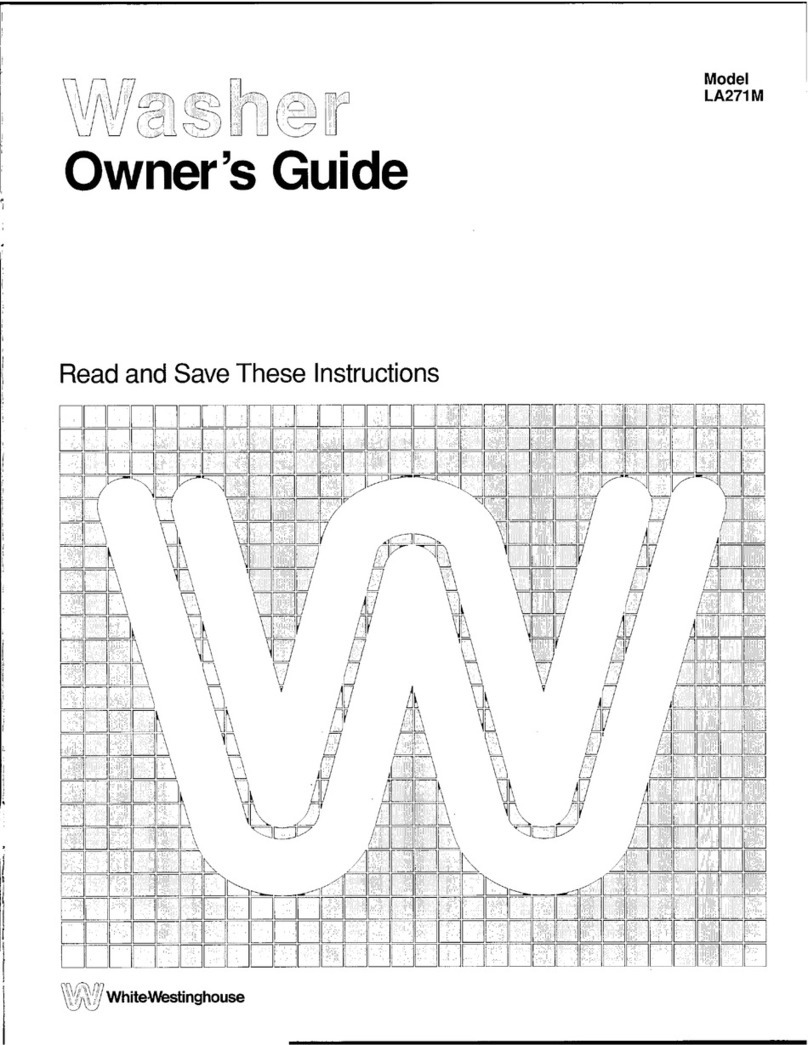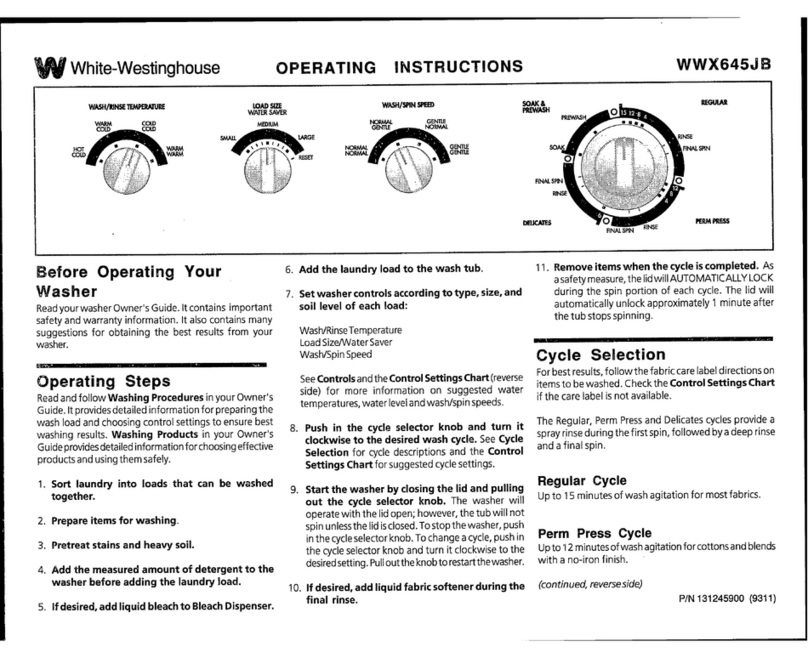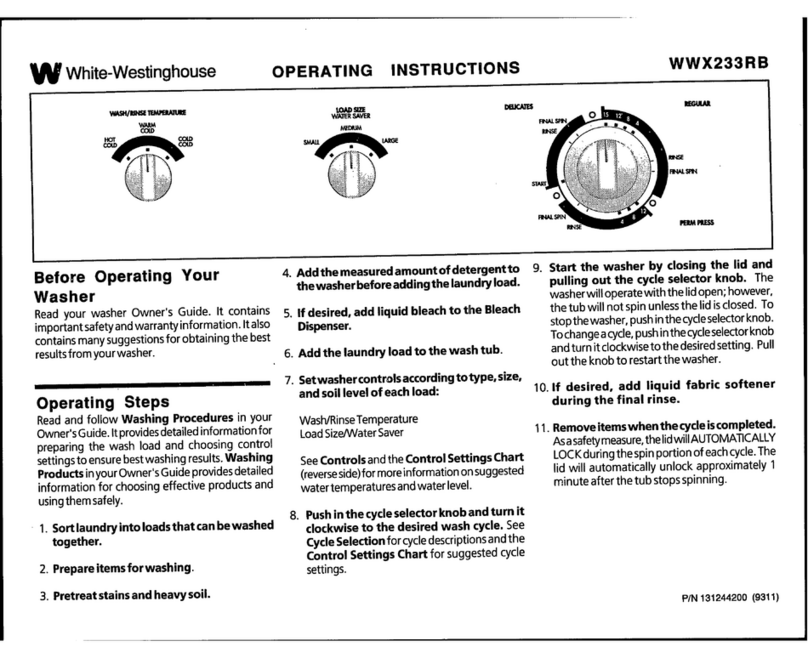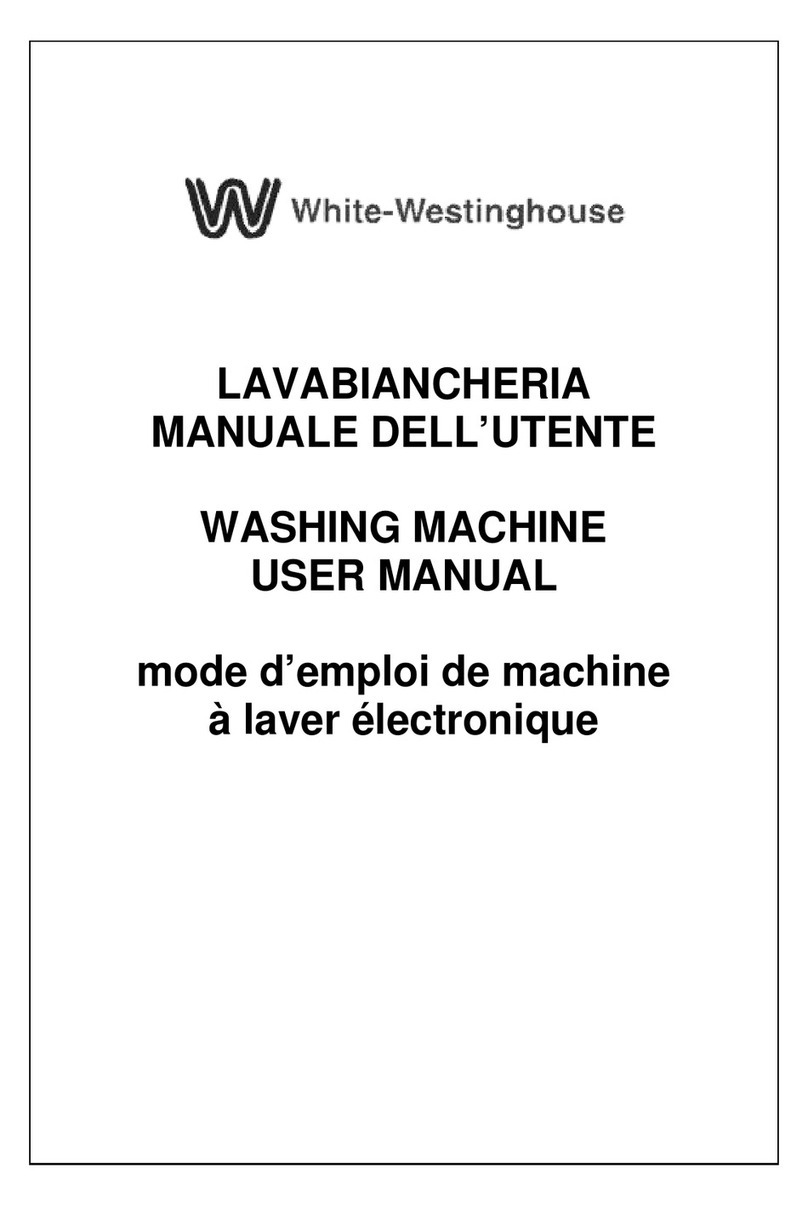
Washing Products
(continued)
E@ Do not ure or mix
liquid chlorine bleach with other
household chemicals such astoilet
cleaners, rust remove6, a(id ol
productr containing ammonia.
These mixtures can produce
dangerous fumes which can cause
serious inlury or death.
Bleach
Bleach is used to remove soils and stains, whiten, disinfect, and eliminate odors
. Add bleach only during the wash portion of a cycle-never during a rinse.
. Do not use bleach on acetate, silk, wool, spandex, leather, or flame-retardant
fabrics.
o Do not use chlorine bleach and nonchlorine bleach together; the benefits of
each will be lost when combined.
. Always test colored fabrics before washrng to be certain they are safe for
bleaching. Use the Bleach Safe Test shown below on the left.
. Never pour bleach directly onto fabrics.
. Liquid chlorine bleach can be used on most white and colorfast fabrics.
water temperature does not affect the bleaching action of chlorine bleach.
NOTE: If the water contains iron and manganese salts, do not use chlorine
bleach. Chlorine bleach will intensify yellow and brown mineral stains. Use a
nonchlorine bleach instead.
Nonchlorine bleach is available in both liquid and powdered form. lt is most
effective in hot wash water. Nonchlorine bleach is safe for most colored,
washable fabrics.
[iquid Fabric Softeners
Liquid fabric softeners make fabrics softer, reduce static cling, wrinkling and
linting, and make ironing easier. Using too much fabric softener can cause build-
up in fabrics, causing items to discolor and feel greasy. lt will also decrease the
absorbancy of fabrics. Do not pour fabric softener directly onto fabrics.
Prewash Soil and Stain Removers
Prewash soil and stain removers are used to pretreat heavily soiled and stained
areas such as collars, cuffs, and knee areas. They are especially effective on oily
stains. For cleaning an item uniformly, a prewash product should be applied to the
entire item. These products are available in spray, liquid, stick, and gel forms.
Water Conditioners and Softeners
Water conditioners combine with calcium and magnesium to soften water and
improve the cleaning power of detergent.
Nonprecipitating water Gonditioners soften water by suspending minerals
in the wash water. Use a nonprecipitating water conditioner with a
nonphosphate detergent in the wash cycle for better washing results, or add
it to the rinse cycle for a fresh smell. Use it without detergent to brighten dull,
grayed laundry.
Precipitating water conditioners such as washing soda work best with
phosphate detergents and should not be used with nonphosphate detergents.
Precipitating water conditioners combine with hardness minerals in water to
form particles which cause the water to turn cloudy. This cloudy residue may
cling to fabrics or washer parts, causing a chalky deposit that is difficult to
remove.
Mechanical water softenert are practical in areas where the water is very
hard. Mechanical water softening equipment should be installed in the home
to remove calcium and magnesium from the water.
Bleach Safe Test
Forliquid chlorine bleach, mix
1 tablespoon (15 ml) of liquid
chlorine bleach and 'l /4 cup (60
ml) of water.
For nonchlorine bleach, mix 1
teaspoon (5 ml) of nonchlorine
bleach and 1 cup (240 ml) of hot
water.
Apply '1 drop of the solution to a
hidden part of the item.
Let stand 1 minute, then blot dry
with a paper towel.
lf there is no color change, the
item can be safely bleached.
10





